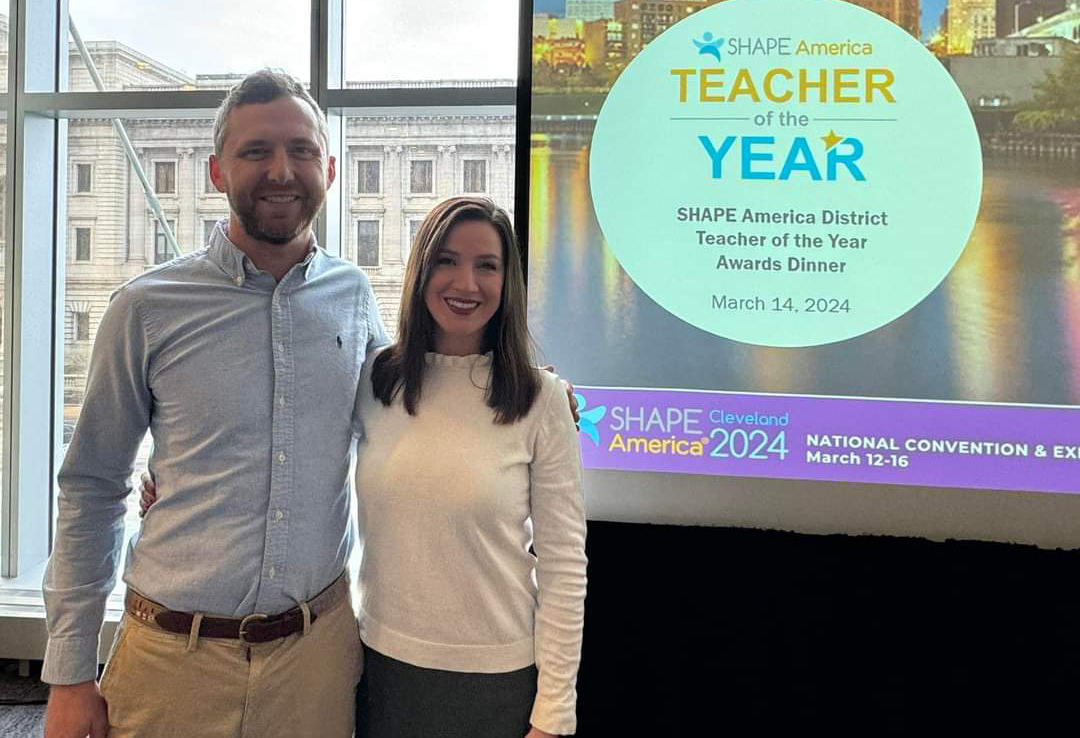
Rick Carr discusses misleading information in advertising during his 6th-grade health class at Woodford County Middle School March 9, 2011. The class was beginning a lesson on tobacco, alcohol and other drugs. Photo by Amy Wallot
By Susan Riddell
susan.riddell@education.ky.gov
If it’s on TV, it must be true.
That saying is a dilemma Rick Carr faces regularly while teaching his health education classes at Woodford County Middle School.
“My students still believe what they see on television and websites, so they get a lot of bad health advice from the media,” said Carr, who is in his 12th year of teaching and sixth at Woodford County Middle. “One of my biggest concerns is all of this wrong information about health.”
With this in mind, Carr and other state health education teachers are hard at work integrating the National Health Education Standards into their classrooms. Doing so puts these teachers at an advantage for when they will complete a practical living Program Review later this year.
“The Program Review process is the opportunity for practical living teachers to have a working document demonstrating the strengths of what they bring to the table for their schools, while at the same time providing an advocacy tool to communicate their needs to administrators and school-based decision making councils,” said Jamie Sparks, Coordinated School Health consultant. “Health and physical education content-area teachers have a very unique opportunity within this process to demonstrate what integration and collaboration should look like through our many wonderful community partnerships related to health education such as local health departments, PACS (Pennyrile Allied Community Services)-NOW (Nutritional Outreach and Wholeness) and county extension agents, to just name a few.”
“We strive to help students develop the knowledge, develop positive attitudes and practice skills/behaviors that will enhance their lifestyle.”
– Lynn Kearney, health and physical education teacher, Taylor County High School
Focusing on students routinely being misinformed, Carr said he is always creating and adjusting his curriculum to make sure they receive the right information. So does Lynn Kearney, health and physical education teacher at Taylor County High School.
“More emphasis is placed on knowing the information and demonstrating the concepts and how to apply it to the students’ decision-making process and their lifestyle,” said Kearney, who has taught for 25 years and is in his 22nd year at Taylor County High. “Students are expected to not only know the basics but how to compare, analyze and demonstrate their knowledge. It challenges the students to advance according to their ability and desire to achieve at a higher level.”
Kearney leans on the National Health Education Standards, saying that they are very helpful.
“They are posted in my classroom,” he said. “The standards are the areas of learning that we address regardless of the topic. It helps to be more specific in planning instruction and helps the students see that what they are learning will be useful in their lives.
“We strive to help students develop the knowledge, develop positive attitudes and practice skills/behaviors that will enhance their lifestyle. The more they mature, the more responsible they are for their choices.”

Students watch old cigarette commercials during Rick Carr’s 6th-grade health class at Woodford County Middle School March 9, 2011.
Photo by Amy Wallot
Carr uses a popular lesson off the standards that addresses his concern for correct and relevant information. Students watch old TV commercials and examine old print ads for tobacco products.
Two of the commercials hail from the black-and-white TV era. In one, Fred Flintstone and Barney Rubble from the cartoon The Flintstones discuss the flavor and pure-white filters of Winston cigarettes. In a Camel cigarette commercial, the narrator talks of how doctors of all branches of medicine were polled and agreed that Camel was their cigarette of choice and how Camels show how “mild and good-tasting a cigarette can be.” A doctor is shown smoking in his office and in his car.
“It is an eye-opening experience when they realize how false the claims in those ads were,” Carr said. “This leads us into a discussion on current health products and some of the too-good-to-be-true claims some of them make.”
Kearney said his nutrition lessons have gone over well with students.
“Coordinated School Health has provided specific information, training and materials to enhance nutrition education,” Kearney said. “The Nutrition Essentials – Teaching Tools for Healthy Choices provided us many teaching tools that educate and engage the students. Programs such as this improve the quality of instruction and help us address and meet the National Health (Education) Standards.”
Concerned with students at all grade levels receiving more physical activity, Kearney said his students “need more physical activity, but in the health education setting we need to improve the methods of teaching about lifetime fitness activities. I would love to see a curriculum on developing a personal fitness plan for individual students like the nutrition essentials program.”
Carr agreed.
“One of my biggest concerns is the lack of emphasis on health in our daily lives,” Carr said. “My students get so many mixed messages about health. Sometimes I feel like teaching them good health habits like proper nutrition and refusal skills is the exact opposite of what society is telling them. As the health teacher it is very hard to see my former students make poor health decisions, but it is understandable when so many of the messages they receive outside of health class glamorize unhealthy behaviors.
“I hope that health education will move to a more experiential-education model,” Carr added. “I’ve tried to incorporate this with my students with activities like having them keep a food journal and learning CPR. I want to give them more than simply handing out health information. Hopefully the students will see and feel firsthand the benefits of healthy habits.”
Although it’s not there yet, Kearney said health education in Kentucky is headed in the right direction.
“The National Health (Education) Standards help us direct our instruction to teach knowledge and life skills,” he said. “We must continue to improve and stay current with new information and the advancement in technology. Many individuals have access to information and tools to track what they are doing through smart phones and things of that nature. Kentucky has specific needs that need to be met in all areas in all parts of the state.”
MORE INFO …
Jamie Sparks, jamie.sparks@education.ky.gov, (502) 564-2706, ext. 4539
Rick Carr, rick.carr@woodford.kyschools.us, (859) 873-4721
Lynn Kearney, lynn.kearney@taylor.kyschools.us, (270) 465-4431



Leave A Comment